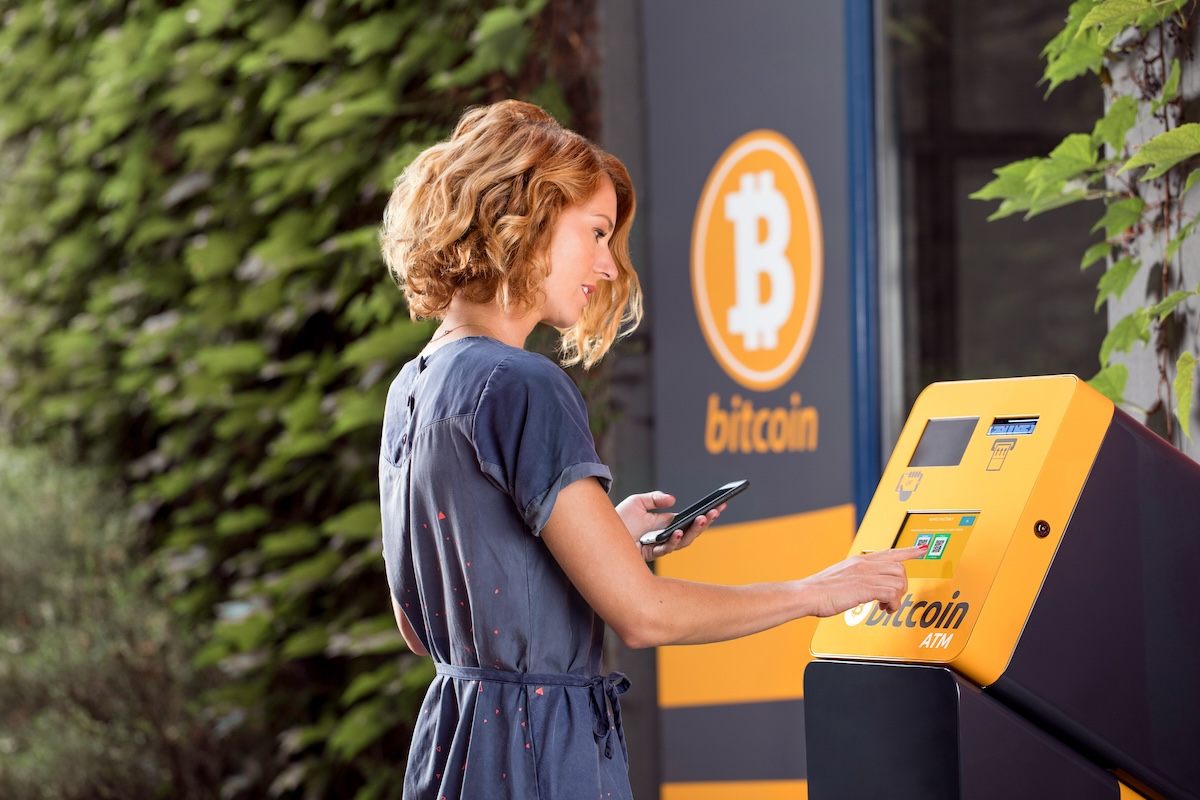

In a speech to the National Press Club yesterday, Home Affairs Minister Tony Burke declared war on bitcoin ATMs, saying they were a notorious link in the money laundering chain for some pretty horrific activities.
You may have seen a few at your local shopping centre or even a petrol station here and there.
Bitcoin ATMs are physical kiosks that allow people to buy cryptocurrency, like bitcoin, with cash or debit cards. While they look like regular ATMs and sometimes stand alongside them in convenience stores, shopping centres, and petrol stations, their function is quite different. Instead of withdrawing or depositing cash from a bank account, users insert cash, enter a digital wallet address, and receive cryptocurrency directly to their phone or online wallet.
Australia now has about 2000 bitcoin ATMs according to AUSTRAC, making us the third-largest market for these machines globally. That’s a rapid expansion: six years ago there were just 23, and three years ago, around 200. This explosive growth has outpaced most other countries, with new machines cropping up in urban centres, small suburban shops, and even near university campuses. Unlike conventional ATMs, where people both deposit and withdraw funds, the overwhelming majority of bitcoin ATM transactions (about 99%) involve depositing cash to buy crypto, rather than converting crypto back into cash.
This spread has made it easier than ever for Australians to get involved in the world of digital assets, but it has also raised new questions about how these machines are being used and misused.
While bitcoin ATMs were designed to make it easier for people to buy digital currency with cash, Australian authorities say they’ve also become a key vulnerability in the fight against organised crime.
Ideally, someone looking to buy bitcoin would use a regulated exchange, where every transaction is linked to a bank account and an identity check. In practice, bitcoin ATMs create a loophole: people can deposit large amounts of cash with less scrutiny, making it harder for law enforcement to trace the money’s origins.
According to Home Affairs Minister Tony Burke, crypto ATMs have been directly linked to money laundering, scams, fraud, illegal drug trade, and even child exploitation. Recent figures from AUSTRAC—the government’s financial intelligence agency—show that almost 150,000 transactions flow through these machines each year, moving about $275 million in cash. When investigators looked at the most frequent users, the findings were stark: 85 percent of the biggest users were either running scams or acting as so-called “money mules,” moving dirty money on behalf of criminals.
One example Burke shared was the case of a 77-year-old Australian widow. After meeting a man online through a dating app, she was convinced to start using bitcoin ATMs to send money, believing she was helping someone she cared about. The scammer coached her through each transaction, sometimes keeping her on the phone as she fed tens of thousands of dollars in cash into different ATMs across the city. By the time authorities caught on, she had lost $430,000 of her savings.
AUSTRAC also points out that older Australians, especially those aged 50 to 70, are most at risk. This age group makes up nearly three-quarters of all bitcoin ATM transactions by value, and they are often the ones targeted in elaborate scams. For these reasons, authorities say, bitcoin ATMs are not just a tool for legitimate investors—they’re also an easy entry point for some of the worst criminal activities operating in the country.
In response to mounting evidence of bitcoin ATMs being exploited by criminals, Home Affairs Minister Tony Burke has announced sweeping new powers aimed squarely at shutting down the loophole. Speaking at the National Press Club, Burke revealed that new legislation is being drafted to amend Australia’s Anti-Money Laundering and Counter-Terrorism Financing Act. The key change? Giving the chief of AUSTRAC—the nation’s financial intelligence agency—the authority to restrict or even ban high-risk products and services, with crypto ATMs top of the list.
If the laws are passed by Parliament, AUSTRAC’s CEO Brendan Thomas says the agency will be ready to act immediately. “Having a power like this enables the CEO to adapt to the evolving risk environment in more responsive ways,” Thomas said. He cited the rapid spread of these machines, noting that the number of crypto ATMs in Australia has jumped from 23 six years ago to around 2,000 today. According to Thomas, the vast majority of large transactions through these machines are tied to scams and money mules, with much of the money being funneled to high-risk jurisdictions overseas.
The new powers would let AUSTRAC move quickly to clamp down on products or services seen as particularly vulnerable to abuse, without waiting for years of regulatory catch-up. That could mean stricter controls, tighter identity checks, or even outright bans on some types of crypto ATM transactions. The government and AUSTRAC say these steps are needed to protect the community, especially vulnerable groups like older Australians, from losing their savings to increasingly sophisticated criminal networks.
The details of the proposed laws are expected in the coming weeks.